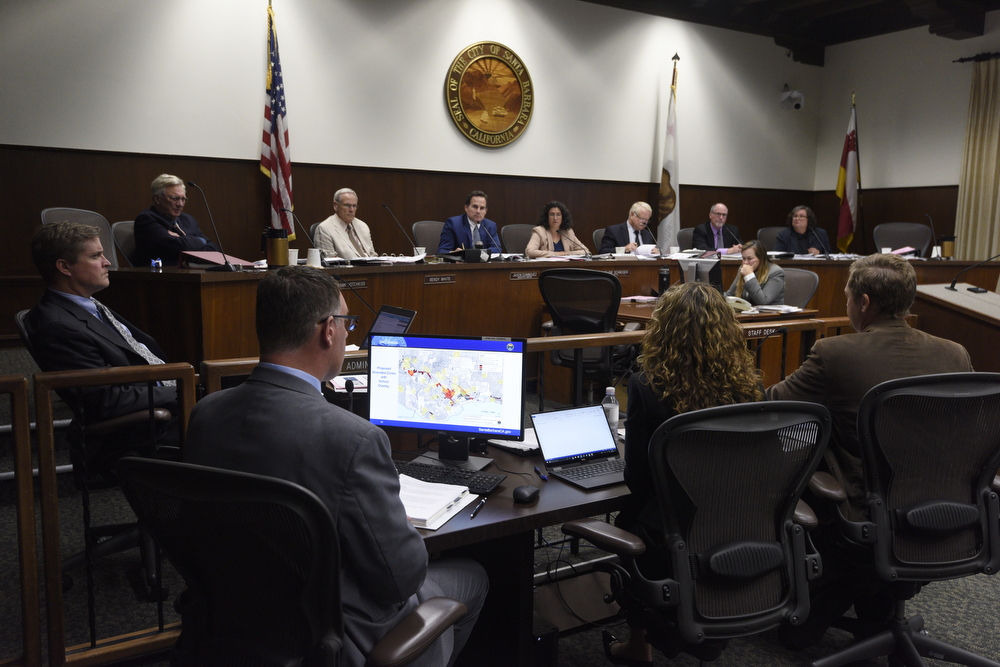Santa Barbara Votes to Allow Five Pot Shops
Unlimited Wholesale Operations Voted In

Santa Barbara will still have more Starbucks than pot shops.
The Santa Barbara City Council voted Tuesday to allow five recreational cannabis retail shops. They relaxed requirements for onsite security guards. They voted to allow an unlimited number of wholesale operations. For personal use, they said residents could have one cannabis plant outdoors and five indoors. (State law requires cities to allow six plants for personal use, but cities can prohibit the number of plants grown outdoors.)
Councilmembers expressed varying degrees of comfort with permitting recreational cannabis. Randy Rowse was the only one to say “no” to everything. He objected to allowing one plant outside for personal use. His colleagues stressed that doing so makes the city eligible for state grant money for education and enforcement. But Rowse said the “money doesn’t exist yet,” calling the concept of such a deal “a real slap in the face.”
While Rowse stood up for “the neighbors,” a majority of the council stood up for the cannabis industry. “I think this is a good start but we have to be really careful about not strangling this industry at the beginning,” Councilmember Gregg Hart said. “This is a rapidly expanding business.”
There was also interest in speeding up the permitting process, lowering the tax rate, and allowing cannabis operations in the city’s manufacturing zones.
Councilmember Jason Dominguez, however, wanted to ban pot shops from Milpas Street. He argued the approved medical marijuana dispensary on Milpas, which is close to opening, generated considerable pushback from the community. There are many K-12 schools along that corridor, he said. When city staff indicated that it was not legally possible to enact a ban in one part of the city, Dominguez pushed to increase the state mandated 600-foot buffer around schools to 800 feet. That would have knocked out many places for a cannabis business on Milpas.
The others, excluding Rowse, were unimpressed. Councilmember Bendy White said, “I don’t like people protecting their turf.” Mayor Helene Schneider argued 200 feet would not do much, and that “children go outside Milpas Street.”
Hart, Schneider, and mayor-elect Cathy Murillo all inquired about speeding up the process so cannabis operators could apply for state licenses because they first must have local approval. But staff said they were too jammed with their workload, particularly with the holidays approaching. The city will accept applications for all cannabis business types through March 30.
The draft ordinance has largely been the work of Anthony Wagner, the top administrator to Santa Barbara Police Chief Lori Luhnow. Wagner comes from San Diego, where he sat on the Planning Commission. He said he “brought 14 retailers into compliance.”
The cannabis industry representatives who spoke praised Wagner’s work but offered a few “tweaks,” including about the voter-approved 20 percent tax rate, process, and number of businesses. The council was largely receptive to those concerns.
Exactly where the pot shops will be located remains to be seen. The council directed staff to explore allowing cannabis oil manufacturing businesses in zones outside of manufacturing zones. Property owner Ray Mahboob, who owns several buildings in the Funk Zone, opposed pot shops on State Street. He wanted them to be in a “different zone — maybe perhaps the Funk Zone,” he said.
The ordinance is still in preliminary stages. But once adopted, the cannabis retail shops’ applications are expected to streamlined. The three proposed medical marijuana dispensaries in the city, which are not counted in the five retail allowance, have been ensnared for years.
The City Council can reduce the voter-approved 20 percent tax on recreational cannabis businesses. They will discuss cannabis regulations again next month.


